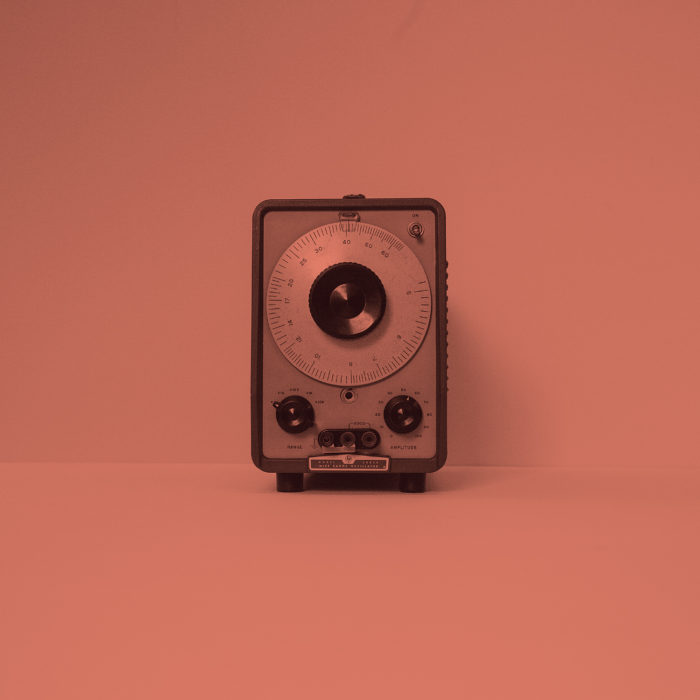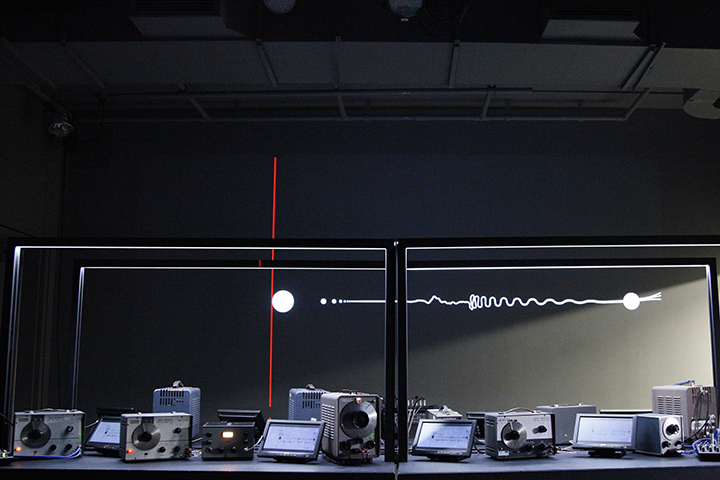This third album by Ensemble d’oscillateurs is pointing towards a future for sine wave-based ensemble performances. The title, 5 Directions, indicates different roads that could be taken by this kind ensemble where 10 musicians are performing on analogue oscillators. These five pieces bring to the forefront a maturity the ensemble has gained over the years.
The first album released in 2016, 4 Compositions (LINE_098), reflected the first attempts of composing and performing with this peculiar instrumentarium. The second album, 2 Transcriptions (LINE_124), was taking the performance of electronic music a step further with arrangements of seminal composers Pauline Oliveros and Else Marie Pade.
This third album, 5 Directions (LINE_131) shows five varying approaches the ensemble could pursue in the future. But foremost, the pieces on this album show the confidence and fulfillment achieved by not only the performers but by the composers working with the ensemble itself.
The first piece by French composer Hervé Birolini exposes the rich combinations possible when the oscillators sine waves are performed alongside virtuosic pre-recorded musique concrète. With three movements over a sixteen minutes duration, this is the longest piece composed for the ensemble so far.
The second piece is the only audiovisual piece created for the ensemble so far. It was composed by Maxime Corbeil-Perron, who is especially known for his work in the realm of the moving image. For an immersive experience, the work can be viewed using 3D glasses (anaglyph, red and cyan). The piece received an honorary mention at Prix Ars Electronica in 2021.
The third piece by Québec composer Pierre-Luc Lecours was the first to combine the ensemble with an acoustic instrument, the cello. This piece is also a step towards a more virtuosic and expressive oscillator performance thanks to a score written with precise use of staccato and accelerando.
The fourth piece is a collaboration by composer and saxophonist Ida Toninato and Nicolas Bernier. While pursuing the combination with an acoustic instrument, this piece is exploring new paradigms: the interpretation of the ten oscillators performed by a single performer (Bernier); the use of pop music elements like arppegiated synth, simple melodic phrases, and foremost, metric rhythms.
The fifth and last piece by the prolific Australian composer Cat Hope is an interpretation of one of her graphic scores. For the ensemble, it is a rare performance of a contemporary score that was not made especially for Ensemble d’oscillateurs. Collectively, the ensemble took some interpretative decision, notably the focus on the low frequency spectrum to create a singular take on the piece.
When Nicolas Bernier started the ensemble in the digital music program of Université de Montréal in 2016, he didn’t knew the journey he was embarking on and never thought that the project would go this far. From literally nothing, the ensemble built from the ground up a repertoire comprising about twenty musical pieces so far. Collaborating with young and established artists from all over the sound art spheres, the ensemble created not only new musical pieces, but also performed graphic scores; arranged pieces from the early electronic repertoire; created a method of notation; created a plugin to read the scores with this notation; built a technical and scenographic setup and even did some workshop to empower the kids in doing electronic music within a group context.
The complete activities and the scores performed by the ensemble can be found here.
The project even eventually allowed the emergence of another research project more broadly studying sine wave creation.
Where to go from these five directions? Actually, this might be the last album of Ensemble d’oscillateurs, at least in its present configuration. The artistic director Nicolas Bernier still thinks there is a life to fulfill with sine wave oscillator performances. But, as a human being, Bernier needs to move on (he might have obtained his legal quota of sine waves). At this point, he his thinking of expanding the ensemble to the realm of more complex sonorities. In the meantime, some other musicians expressed their interest in forming oscillator ensembles and expand the repertoire and the expressivity of sine wave orchestras.
The future will tell.


